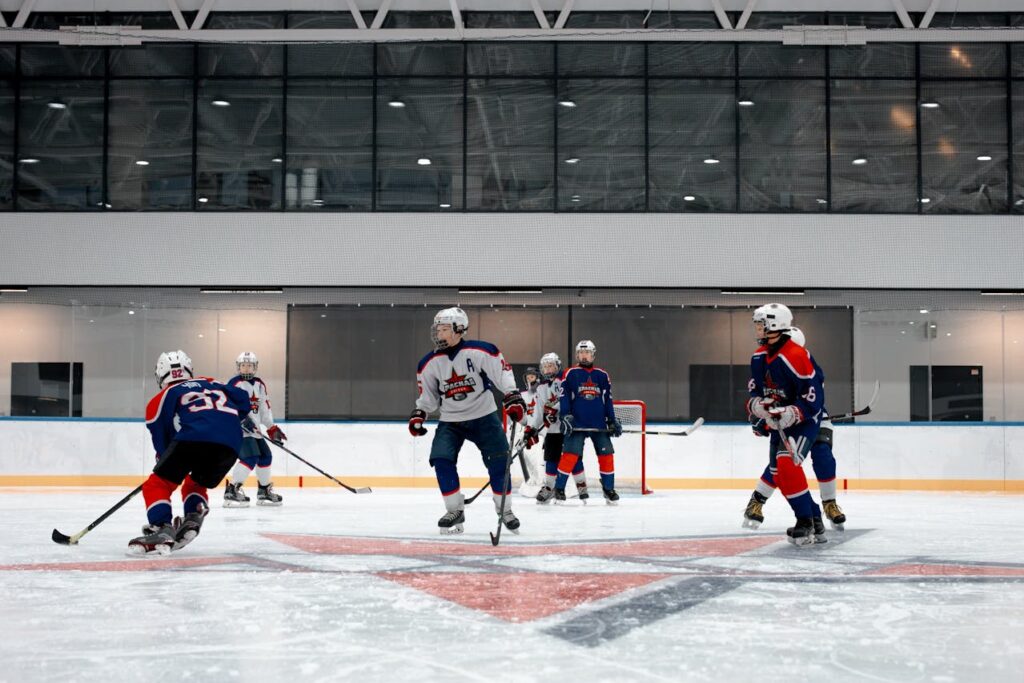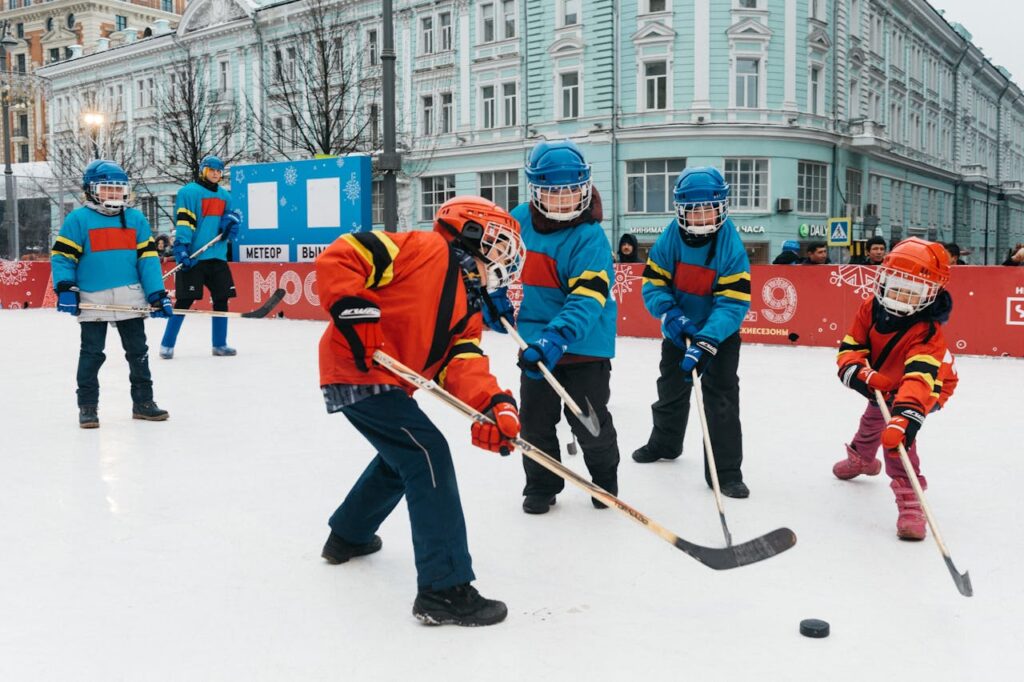The Origins of Ice Hockey: Where Was It Invented?
Ice hockey is one of the world’s fastest and most exciting sports, loved by millions across North America, Europe and beyond. But where was ice hockey invented? The roots of ice hockey are widely disputed, with several locations vying for recognition as its birthplace. This article analyzes the sport’s beginnings, historical records, early versions of the game, and its transformation into the high-energy spectacle it is today. Join us as we uncover the fascinating journey of ice hockey from its simple origins to its current global prominence.

Early Roots of Hockey-Like Games
Before ice hockey became an organized sport, various stick-and-ball games were played on ice for centuries. The earliest forms of hockey established the basic rules and gameplay that later evolved into the modern sport. These foundational matches introduced key elements like sticks, pucks, and team competition, shaping hockey’s future. Over time, refinements in structure, strategy, and equipment transformed these primitive games into the fast-paced, organized sport we know today.
1. Ancient Stick-and-Ball Games
- Egypt & Greece: Some historians suggest that stick-and-ball games date back to ancient civilizations, though these were not played on ice.
- Ireland’s Hurling & Scotland’s Shinty: These field games involved sticks and a ball, similar to hockey but without ice.
2. European Winter Games
- Netherlands (16th-17th Century): Dutch paintings from the 1600s show people playing “kolven” or “ijskolf,” a game played on frozen canals with curved sticks and a ball.
- England’s Bandy: A precursor to hockey, bandy was played on ice with sticks and a ball, popular in England in the 18th and 19th centuries.
While these early games helped shape ice hockey’s evolution, none of them matched the structure or style of the modern game

Canada: The Birthplace of Modern Ice Hockey?
Most historians agree that Canada is where ice hockey was formalized into the game we recognize today. Several key developments support this claim.
1. Early Canadian Hockey (1800s)
- Mi’kmaq Indigenous Influence: Indigenous communities in Nova Scotia played a game called “ricket” or “lacrosse on ice,” using wooden sticks. European settlers may have adapted these games.
- British Soldiers & Immigrants: British troops stationed in Canada played similar stick games on frozen ponds, blending elements of field hockey and rugby.
2. The First Organized Game (Montreal, 1875)
- James Creighton played a key role in hockey’s early development, most famously by organizing the first documented indoor game at Montreal’s Victoria Skating Rink on March 3, 1875. His efforts helped establish the foundation for modern ice hockey, introducing structured play in a controlled environment.
- This historic event marked a turning point in the sport’s evolution, transitioning it from informal outdoor games to a more organized and regulated competition. Creighton’s contributions remain significant in hockey history, as his vision and initiative laid the groundwork for the fast-paced, indoor version of the game enjoyed worldwide today.
- Rules & Structure: This game featured standardized rules, including nine players per side and a flat wooden puck instead of a ball.
It also needs:–How to register for USA Hockey 2025-2026 and what are the different roles?
3. The Formation of Leagues & Associations
- 1886 – Amateur Hockey Association of Canada (AHAC): The first official hockey league was established, formalizing competition.
- 1893 – The Stanley Cup is Born: Lord Stanley of Preston introduced the Stanley Cup, which would go on to become the most coveted trophy in professional hockey.
Other Claims to Hockey’s Origin
Although Canada is often hailed as the birthplace of hockey, other regions have also laid claim to the sport’s origins.
1. Kingston, Ontario (Earlier Games?)
- Some records suggest British soldiers played hockey-like games in Kingston as early as the 1840s, but evidence is less concrete than Montreal’s 1875 game.
2. Windsor, Nova Scotia (The “Birthplace of Hockey” Debate)
- A 2002 book by historians Garth Vaughan and Jean-Patrice Martel argued that British soldiers played hockey in Windsor, Nova Scotia, in the early 1800s.
- However, this claim lacks definitive proof compared to Montreal’s documented 1875 match.
3. Europe’s Influence (Bandy & Hurley)
- Some argue that European games like bandy (Russia, Scandinavia) and hurling (Ireland) influenced hockey’s development, but these were not identical to modern ice hockey.
How Ice Hockey Evolved into a Global Sport
From its early days in Canada, ice hockey spread rapidly, becoming an international phenomenon.
1. Expansion in North America
- Early 1900s: Professional leagues formed, including the National Hockey Association (NHA) in 1910, which later became the NHL (1917).
- U.S. Growth: Hockey gained popularity in northern U.S. states like Michigan and Massachusetts due to cold winters and Canadian influence.

2. International Spread
- Europe (Early 1900s): Hockey was introduced in Sweden, Finland, Russia, and Czechoslovakia, leading to the formation of national leagues.
- Olympic Debut and Evolution (1920-1924): Ice hockey was first introduced at the 1920 Summer Olympics in Antwerp, marking its official Olympic debut. Four years later, it transitioned to the Winter Olympics in 1924, where it became a permanent fixture. This shift solidified ice hockey’s status as a premier winter sport in the global sporting arena. The early Olympic inclusion helped popularize the game worldwide, paving the way for its growth into a highly competitive and widely celebrated discipline. Today, Olympic ice hockey remains a highlight of the Winter Games, showcasing elite talent and international rivalry.
3. Modern Hockey (NHL Dominance & Global Leagues)
- NHL Expansion (1967+): The league grew from six teams to 32, with franchises in the U.S. Sun Belt (e.g., Tampa Bay, Las Vegas).
- KHL & European Leagues: Russia’s Kontinental Hockey League (KHL) and Sweden’s SHL showcase hockey’s global appeal.
Conclusion
Friends, in today’s post you learned where ice hockey was invented, Although many cultures contributed to early ice stick-and-ball games, Canada is the true birthplace of modern ice hockey. The 1875 Montreal game, organized by James Crighton, marks the formal beginning of the sport, followed by the establishment of the league and the Stanley Cup.
While regions like Nova Scotia and parts of Europe influenced its development, it is Montreal’s well-documented milestones that strengthen Canada’s pioneering claim. Ice hockey continues to thrive globally—from the NHL arenas to the Olympic stage—fueled by its high-speed action, intense competition, and deep-rooted legacy.
Final Thoughts
Understanding the origins of hockey helps fans understand how the sport evolved from frozen ponds to huge arenas. Whether you’re a die-hard NHL fan or a casual viewer, knowing where hockey began adds depth to every slapshot and breakaway! If you liked the information we provided, then let us know by commenting for our motivation. Thank you very much
